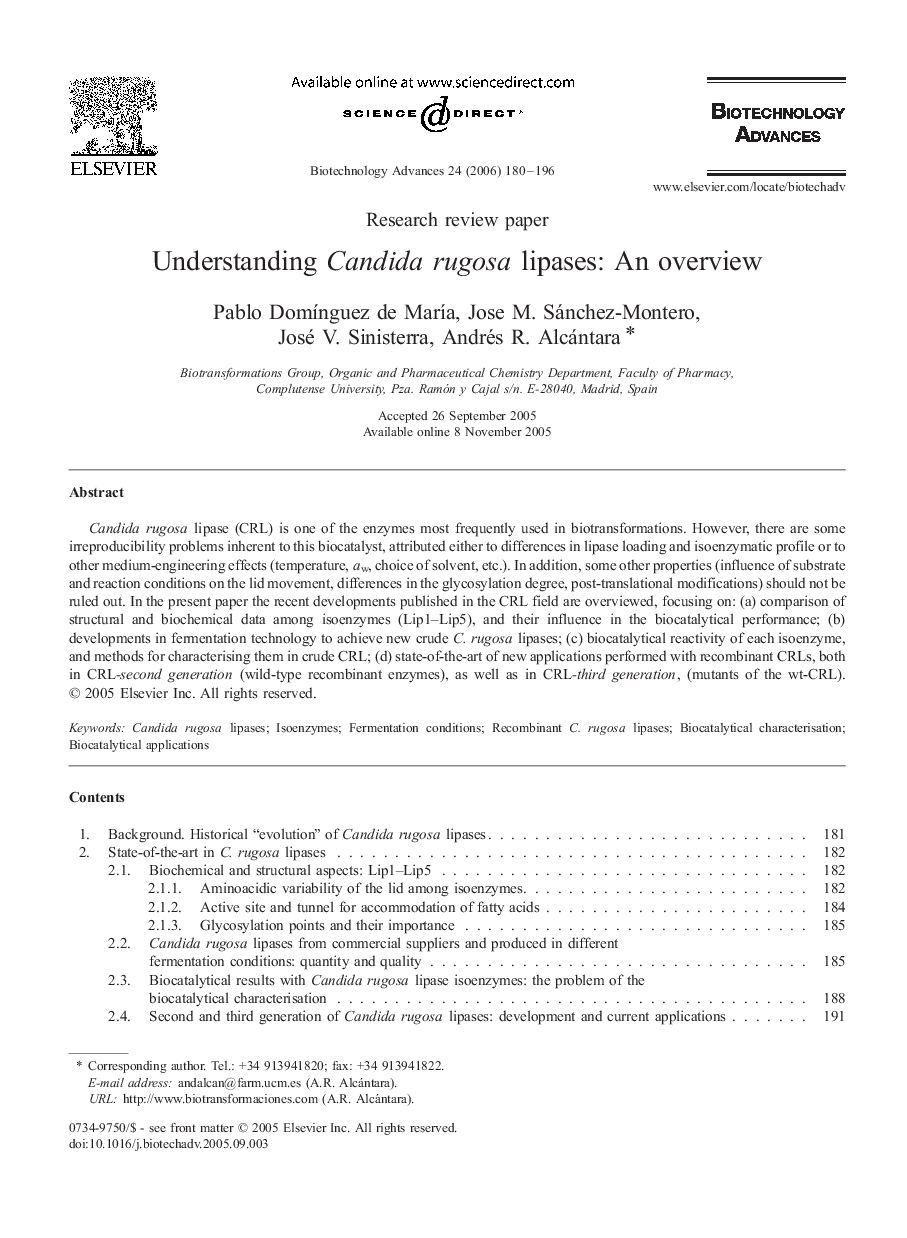| Article ID | Journal | Published Year | Pages | File Type |
|---|---|---|---|---|
| 14873 | Biotechnology Advances | 2006 | 17 Pages |
Candida rugosa lipase (CRL) is one of the enzymes most frequently used in biotransformations. However, there are some irreproducibility problems inherent to this biocatalyst, attributed either to differences in lipase loading and isoenzymatic profile or to other medium-engineering effects (temperature, aw, choice of solvent, etc.). In addition, some other properties (influence of substrate and reaction conditions on the lid movement, differences in the glycosylation degree, post-translational modifications) should not be ruled out. In the present paper the recent developments published in the CRL field are overviewed, focusing on: (a) comparison of structural and biochemical data among isoenzymes (Lip1–Lip5), and their influence in the biocatalytical performance; (b) developments in fermentation technology to achieve new crude C. rugosa lipases; (c) biocatalytical reactivity of each isoenzyme, and methods for characterising them in crude CRL; (d) state-of-the-art of new applications performed with recombinant CRLs, both in CRL-second generation (wild-type recombinant enzymes), as well as in CRL-third generation, (mutants of the wt-CRL).
